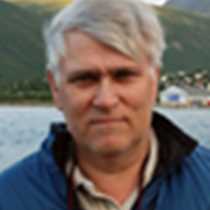National Geographic Explorer below the Antarctic Circle
Yesterday afternoon we landed at Petermann Island, the wintering place for the French polar explorer Charcot. Today we have followed in the footsteps of his amazing exploration along the western side of the Antarctic Peninsula. As our expedition leader made the morning wakeup call, the Captain and his officers and crew had taken our ship further south, across the Antarctic Circle (S66o 43’). Maybe some expected a major bump but no, still a very important line. On the midsummer night (December 21-22) this is as far north as you will experience 24 hours sunlight in the Southern Hemisphere.
In about 6 months the ship National Geographic Explorer will be north of the Arctic Circle, but to compare the Arctic with Antarctica is impossible. Antarctica is a frozen continent surrounded by ocean, the Arctic is a frozen ocean surrounded by continents.
Through the morning we navigated through the narrow Gullet and soon sailed in Marguerite Bay. This is really “Charcot Land”. Jean-Baptiste-Etienne-Auguste Charcot made two major Antarctic voyages, first with his ship Francais (1903 - 05) and again with the ship Porquoi-Pas? (1908 - 10). His aim going south the first time was to search for the “lost” Swedish Antarctic expedition. As he arrived to Buenos Aires he heard they had been rescued by the ship Uruguay and were already safe in Argentina. Instead he went south and spent time mapping the western side to the Antarctic Peninsula during his two major expeditions.
The Gullet was first explored and mapped during the Porquoi-Pas? expedition and was first named “Charcot Channel”. Later a British expedition with the ship Penola renamed it to “The Gullet”. It is very narrow and impacted by strong currents and even in the peak of summer holds a lot of trapped sea ice making it very challenging for any navigator to sail through.
On the large flat sea ice we spotted plenty of crabbeater seals and just as we got out from the narrows we had a brief sighting of killer whales. The weather kept us mainly inside the ship as it was howling winds and also snowing. Inside, the cozy bridge and observation room were filled to capacity. Through the morning we continued sail south, and here it is really an expedition by all means. Between the snowflakes we were able to spot the British Base Rothera on the south eastern side to Adelaide Island.
During lunch the Captain slowly approached the island Porquoi-Pas? Here you find a nice sheltered bay mapped by Rymill in 1936 but named Dalgliesh Bay in 1948 (after the doctor at the British station Stonington). Plan A was of course to land at a penguin colony but ice along the shoreline made it impossible to get any Zodiac near the beach. Plan B was rapidly designed, drop all kayaks and Zodiacs and spend time exploring the icebergs and shoreline from the water. Our Chocolate boat was of course launched.
In the late afternoon it to was time to steam north and our furthest south point was recorded to S67o43’. We all belong to unique crowd to have been below the Convergence and also below the Antarctic Circle, some even more so as they took the opportunity to kayak below the Circle!
After dinner we sailed back through the narrow Gullet in dense snowfall. Lucky birders saw snow petrels and even the rare Antarctic petrels sweep along the side to the ship.
A busy day and time to download all pictures taken and most important catch some sleep for the next long intense day to come in Antarctica.




